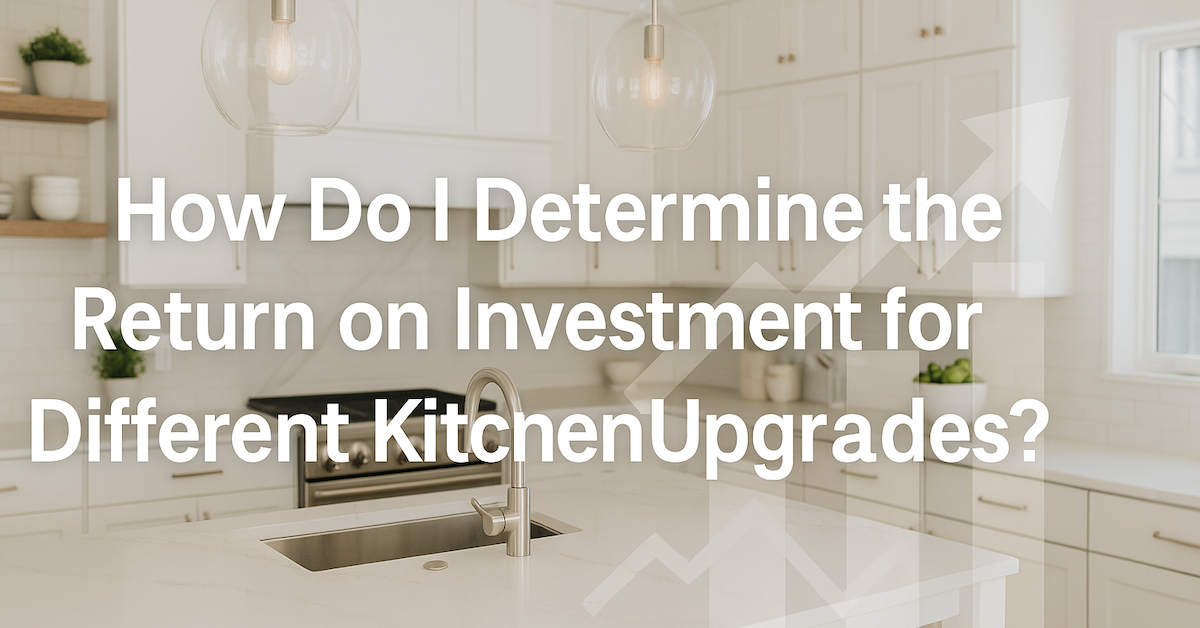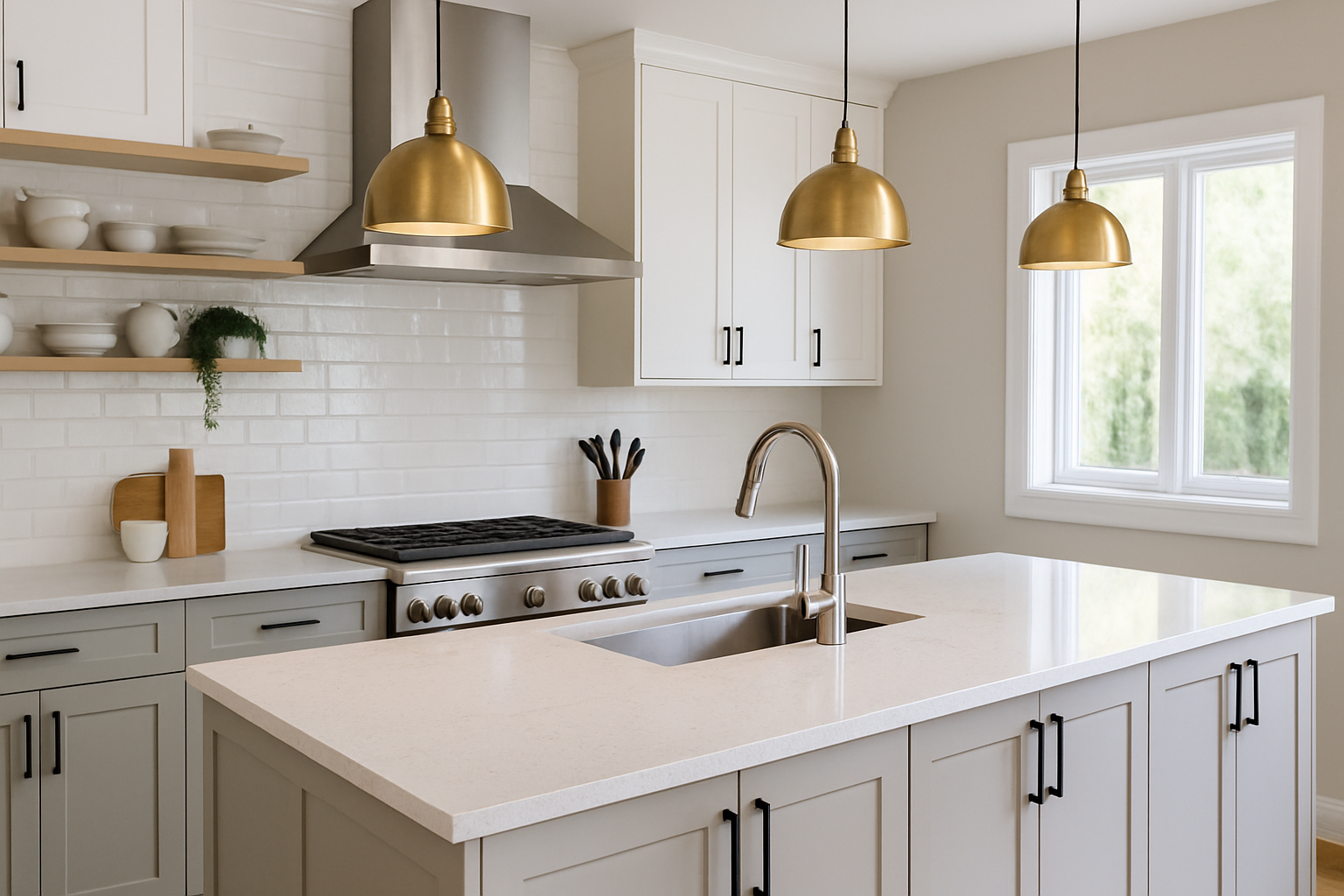How Do I Determine the Return on Investment for Different Kitchen Upgrades?
Upgrading your kitchen is one of the best ways to add value to your home, but not all renovations deliver the same return on investment. Some upgrades boost resale value significantly, while others are more about personal enjoyment. To make the most of your budget, you need to know how to calculate ROI and choose upgrades that balance style, function, and long-term value.

What Does ROI Mean in Kitchen Renovations?
ROI, or return on investment, measures how much value you gain from a renovation compared to what you spend. It’s typically expressed as a percentage and can be calculated using a simple formula:
ROI = (Value Increase ÷ Renovation Cost) × 100
For example, if you spend $10,000 on new countertops and your home’s value increases by $7,000, your ROI would be 70 percent. While you may not always recoup the full cost, the right upgrades can significantly enhance your home’s appeal and help it sell faster.
Popular Kitchen Upgrades and Their ROI Potential
Cabinet Refacing or Replacement
Updating cabinets is often one of the most noticeable changes in a kitchen. Refacing, which involves replacing the doors and refinishing the boxes, can provide a fresh look for a lower cost than full replacement. High-quality cabinet updates can yield an ROI of 60 to 80 percent,
depending on materials and design.
Countertop Upgrades
Countertops are a major focal point, and materials like quartz, granite, or butcher block can dramatically improve both appearance and functionality. Stone surfaces often bring in a strong ROI because they’re durable and attractive to buyers.
Appliance Upgrades
Energy-efficient appliances not only lower utility bills but also appeal to environmentally conscious buyers. Stainless steel models remain popular, and a full set of updated appliances can offer an ROI in the range of 60 to 70 percent.
Lighting Improvements
Modern, well-placed lighting can
transform how your kitchen looks and feels. Recessed lighting, under-cabinet LEDs, and stylish pendant lights over islands or dining areas can improve both aesthetics and usability. While lighting alone may not have the highest ROI, it enhances the perceived value of other upgrades.
Flooring Changes
Replacing worn-out flooring with hardwood, luxury vinyl plank, or tile can improve durability and design appeal. Quality flooring can have a strong impact on resale value, especially if it ties the kitchen seamlessly to other spaces in the home.
How to Calculate ROI for Your Kitchen Project
To determine the ROI for a specific upgrade, start with three steps:
- Research Your Local Market – See what features are common in recently sold homes of similar size and price.
- Estimate Your Costs Accurately – Include materials, labor, permits, and any unexpected expenses.
- Assess the Added Value – Consult a real estate professional or use home valuation tools to estimate how much your upgrade could raise your home’s selling price.
Remember, ROI is about more than just numbers. A kitchen that feels modern, functional, and well-maintained can attract more buyers and shorten time on the market, which is a form of value in itself.
Factors That Boost ROI in Kitchen Renovations
Timeless Design Choices
Neutral colors, clean lines, and classic materials tend to appeal to the widest audience, making them a safer investment.
High-Quality Materials
Durability matters. Buyers appreciate materials that look good and last, such as solid wood cabinets, quartz countertops, and quality hardware.
Energy Efficiency
Appliances, lighting, and even windows that lower utility costs can be a strong selling point.
Functional Layout
Good workflow, ample storage, and logical placement of key elements can make a kitchen feel more valuable without increasing square footage.

Common Mistakes That Lower ROI
Over-Customizing the Space
While you might love bold cabinet colors or
ultra-specific design features, they can turn off potential buyers.
Spending Too Much for the Neighborhood
If you over-invest compared to the typical home value in your area, you may not recoup your costs.
Neglecting Small but Impactful Updates
Sometimes, replacing cabinet hardware, updating faucets, or adding a fresh coat of paint can give you a strong ROI without major construction.
Balancing ROI with Personal Enjoyment
While maximizing ROI is important if you plan to sell soon, many homeowners renovate to improve their own living experience. If you’ll be staying in your home for years, factor in how much an upgrade will improve your day-to-day life, even if the financial return is lower.
Conclusion
Determining the ROI for kitchen upgrades involves balancing your budget, market expectations, and personal preferences. Some upgrades like cabinet refacing, new countertops, and updated appliances offer strong returns, while others may be worth it primarily for your own enjoyment. By making strategic choices, you can enhance both your home’s value and your own cooking experience.
If you’re ready to plan a kitchen remodel that maximizes your investment, Kitchen Discounters can help. Our team specializes in designing kitchens that balance style, function, and lasting value, ensuring you get the most from every dollar you spend.

